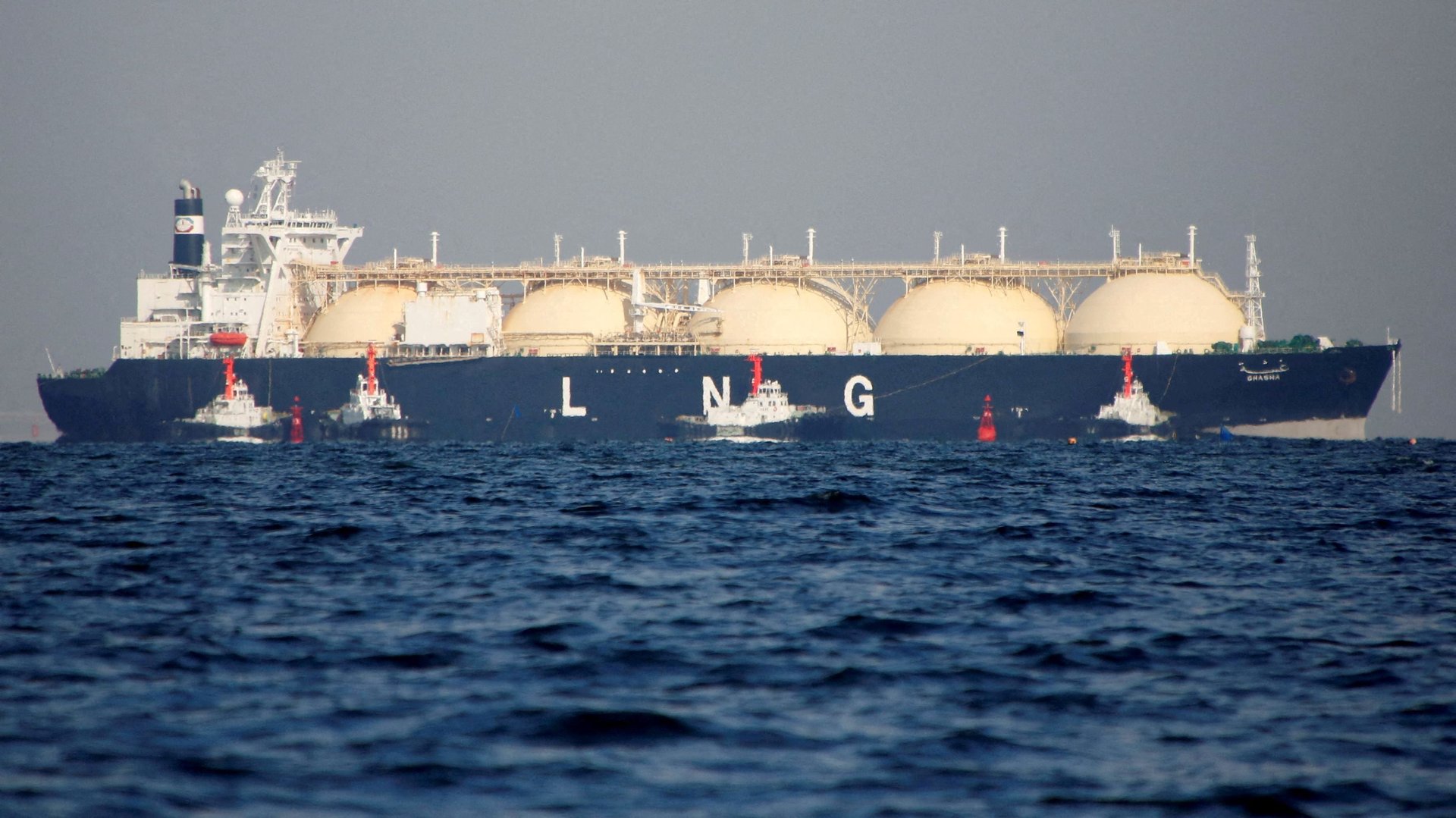The world’s top liquified natural gas exporter is facing a gas shortage
Australia is the world’s top exporter of liquified natural gas (LNG). Right now, it is also facing a domestic gas crisis.


Australia is the world’s top exporter of liquified natural gas (LNG). Right now, it is also facing a domestic gas crisis.
Prices of power and gas in the land down under have surged amid what the country’s energy minister has called a “perfect storm” of factors.
Those factors include a cold snap that has driven up heating demand, outages at coal-fired power plants, and a tight global LNG market as European countries scramble to cut their reliance on Russian gas. That has left Australia in the lurch as spare regasification units—vessels that store LNG and turn it back to natural gas when needed—have been snapped up by European customers. Natural gas accounts for 22% of Australia’s primary energy consumption.
The gas shortage means many consumers have to pay more to keep their lights on and their homes heated; energy-intensive businesses could find themselves in perilous financial situations, potentially putting jobs at risk. For the newly elected government headed by prime minister Anthony Albanese, the energy crunch also represents its first major test.
“A gas crisis…15 years in the making.”
It might seem counterintuitive that the world’s top LNG exporter would face a gas shortage at home.
In part, this is due to geographic reasons: Major cities including Sydney and Melbourne in the southeast are far away from the country’s main gas fields.
Of course, the global energy crisis unleashed by Russia’s invasion of Ukraine is to blame, too.
But policy decisions taken by the Australian government also laid the foundation of what Australian Broadcasting Corporation’s business editor Ian Verrender calls “a gas crisis that has been 15 years in the making.”
First, he argues, there has been “a critical shortage of investment in energy generation.” And second, Australia has allowed large global energy companies to export much of the country’s gas.
Indeed, while the state of Western Australia mandates that gas export development projects must reserve 15% for the domestic market, state governments in the east did not put in place such a requirement, and ” gave local and multinational energy firms carte blanche to export as much as they’d like,” writes Verrender. The result is that nearly 75% of Australia’s gas production is exported.
So what’s to be done?
Already, Australia’s energy market operator has capped wholesale gas prices in southern states. It also for the first time triggered a mechanism to call on more gas supplies for power generators.
But those measures leave unaddressed what analysts say is a more fundamental problem: the high proportion of natural gas exports relative to production.
Gas analyst Bruce Robertson of the Institute for Energy Economics and Financial Analysis argues that eastern states in Australia should have a gas reservation policy like their Western Australia counterparts. As Robertson told the Canberra Times, a domestic gas reservation policy in other states can protect consumers from “ridiculous prices.”
Or as research from the Australian Institute’s Climate and Energy program puts it, “Australia doesn’t have a gas supply problem. [It] has a gas export problem.”